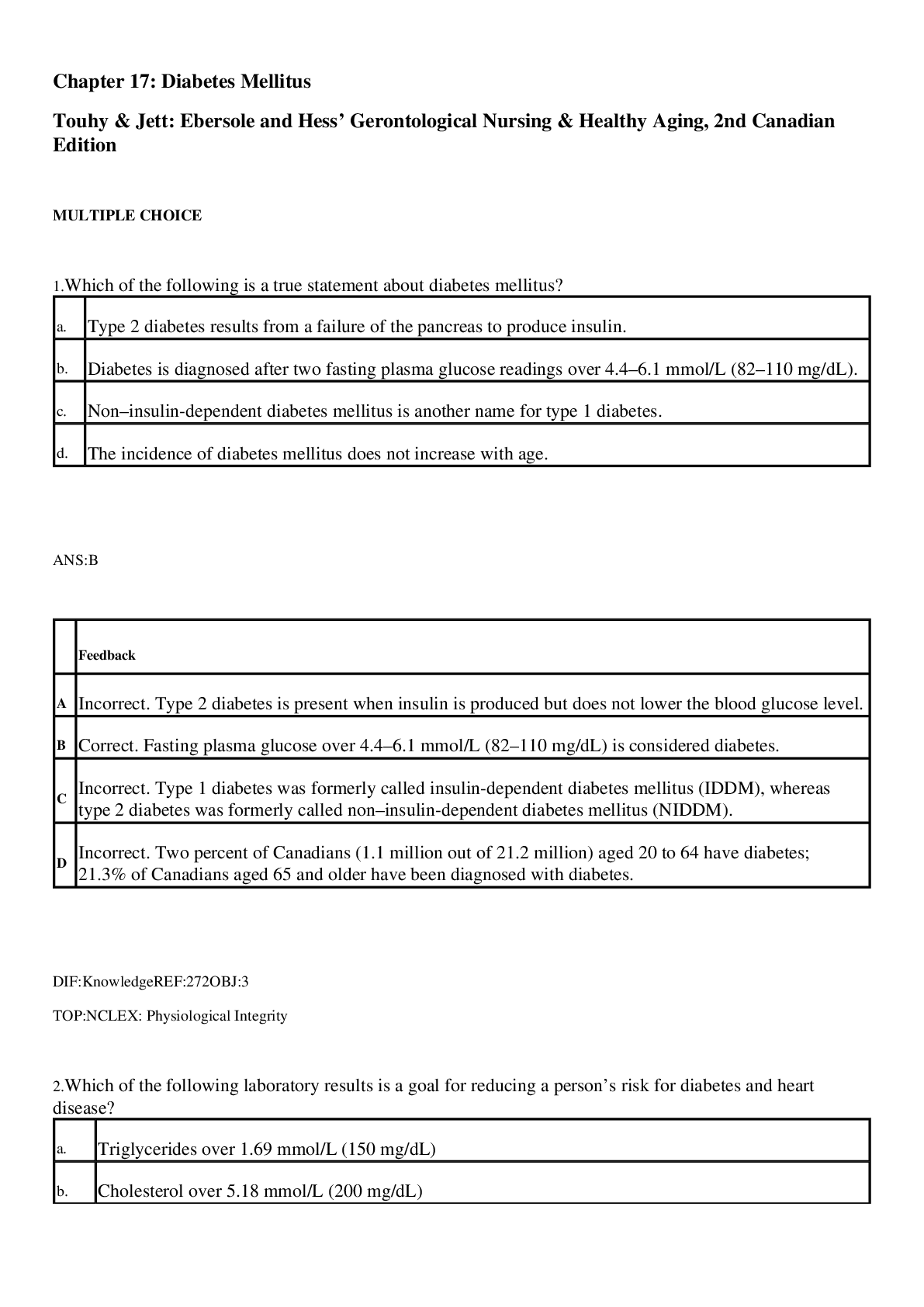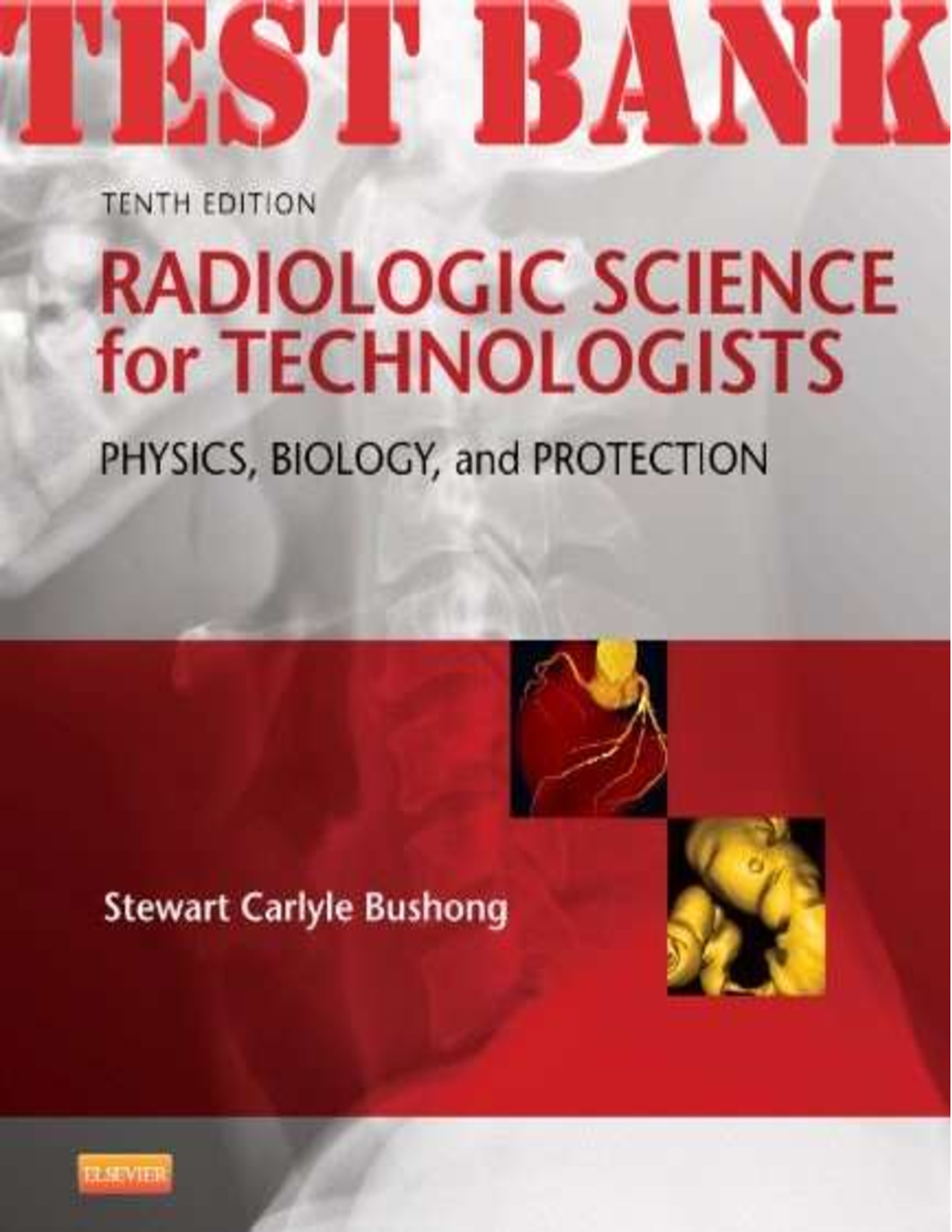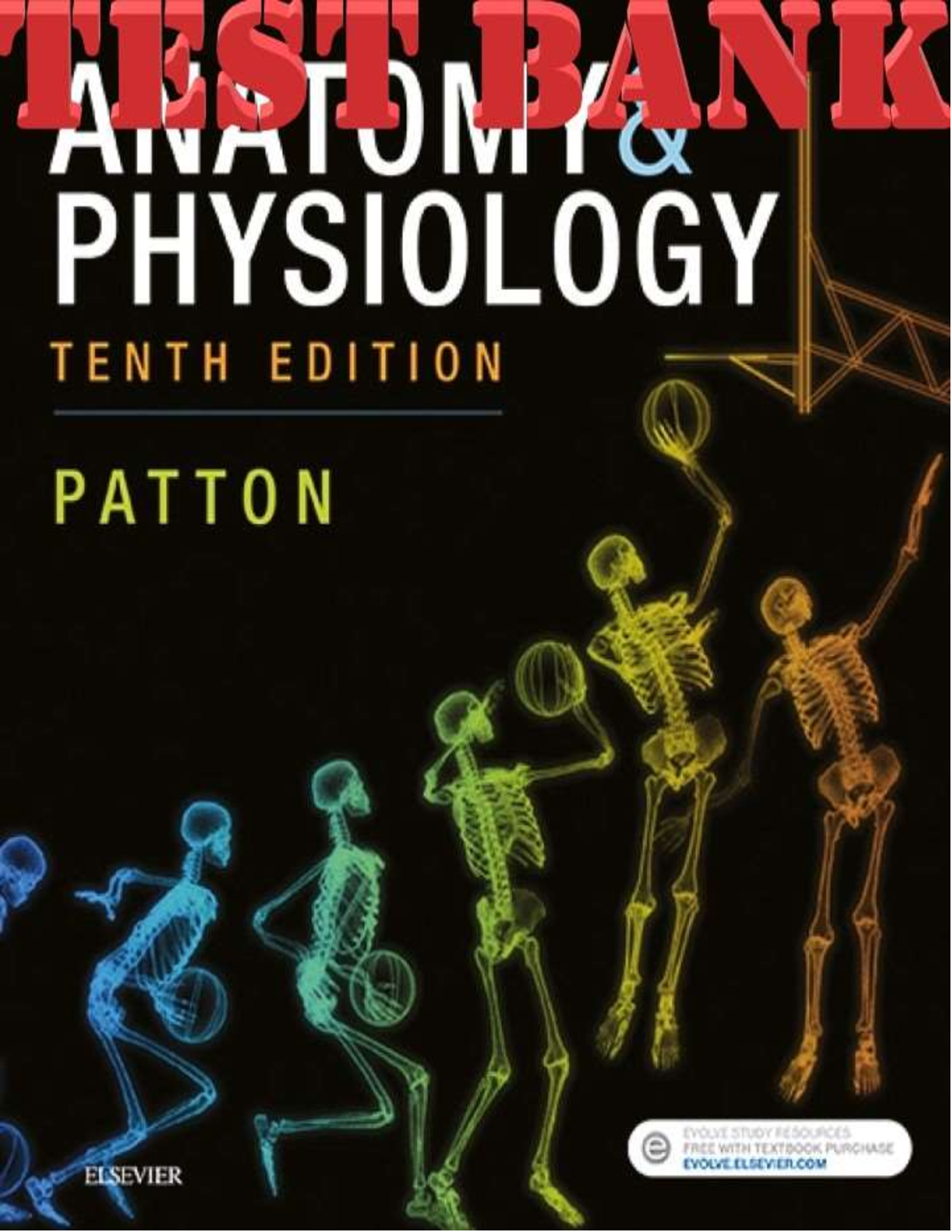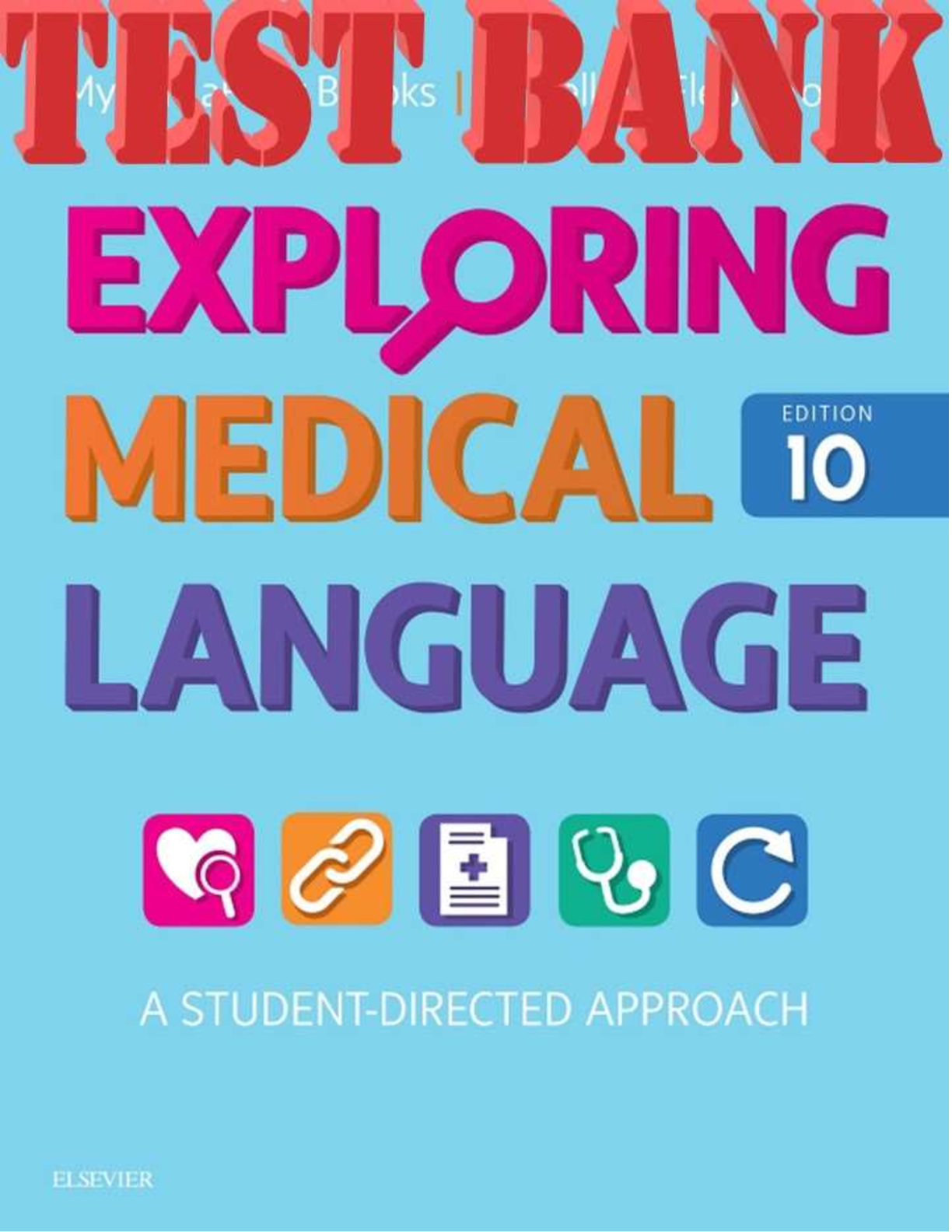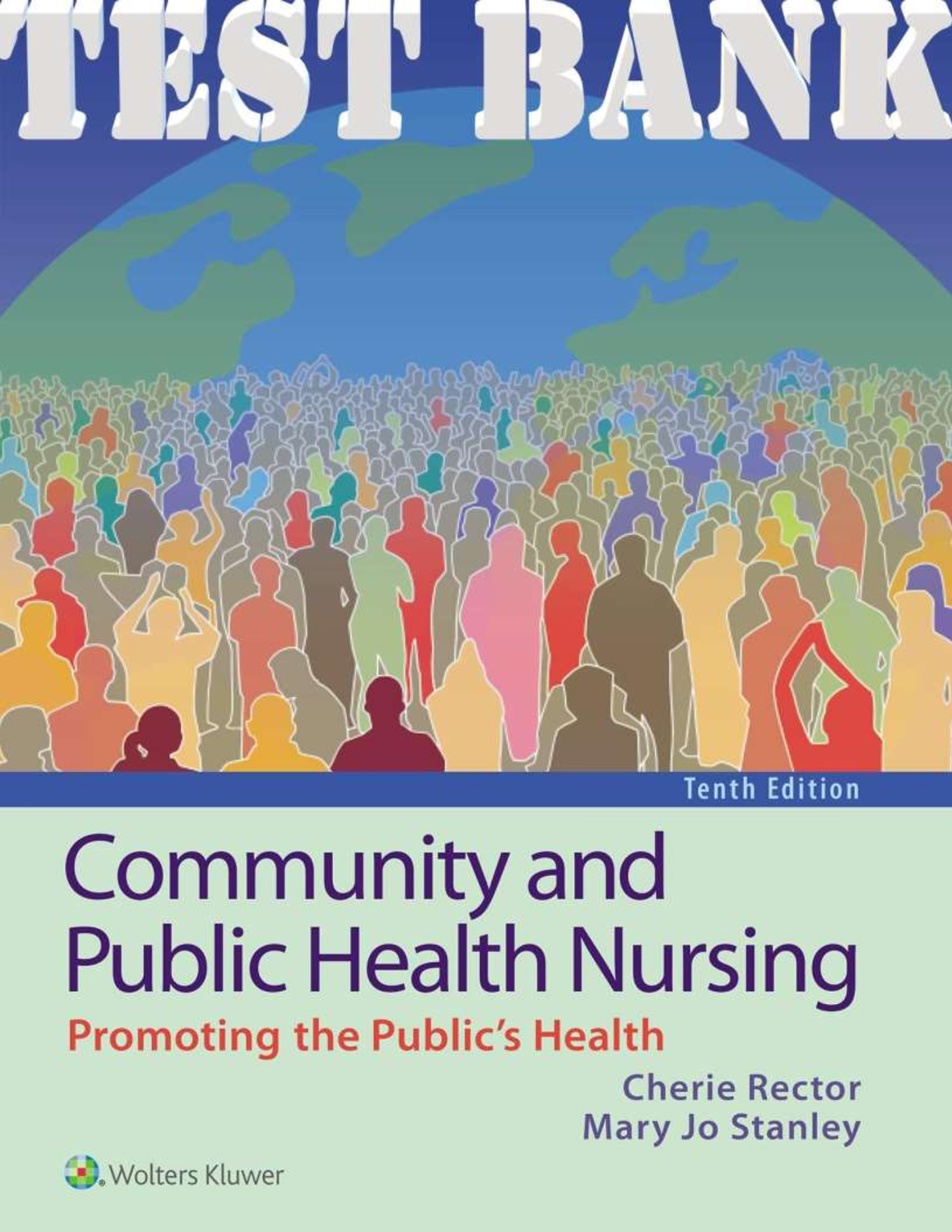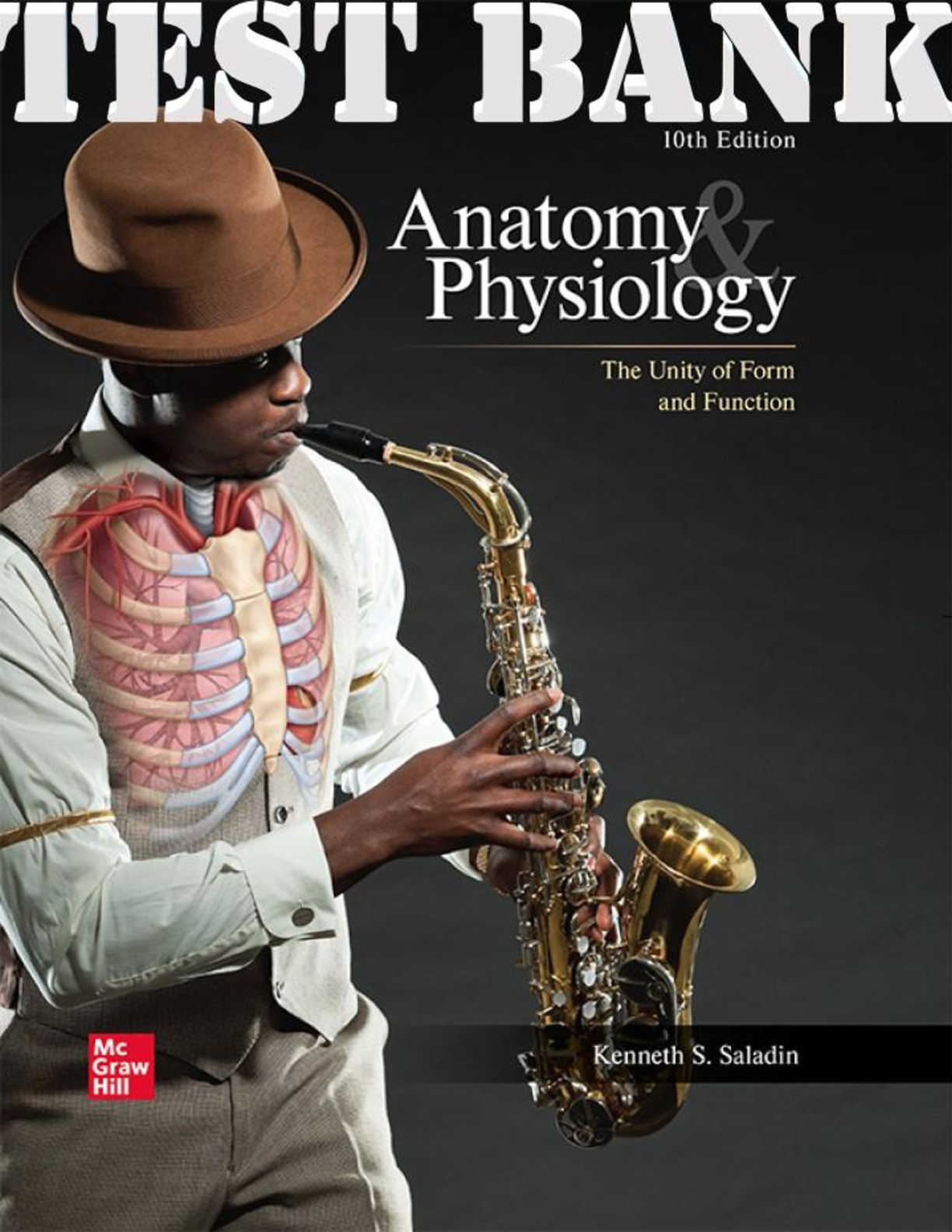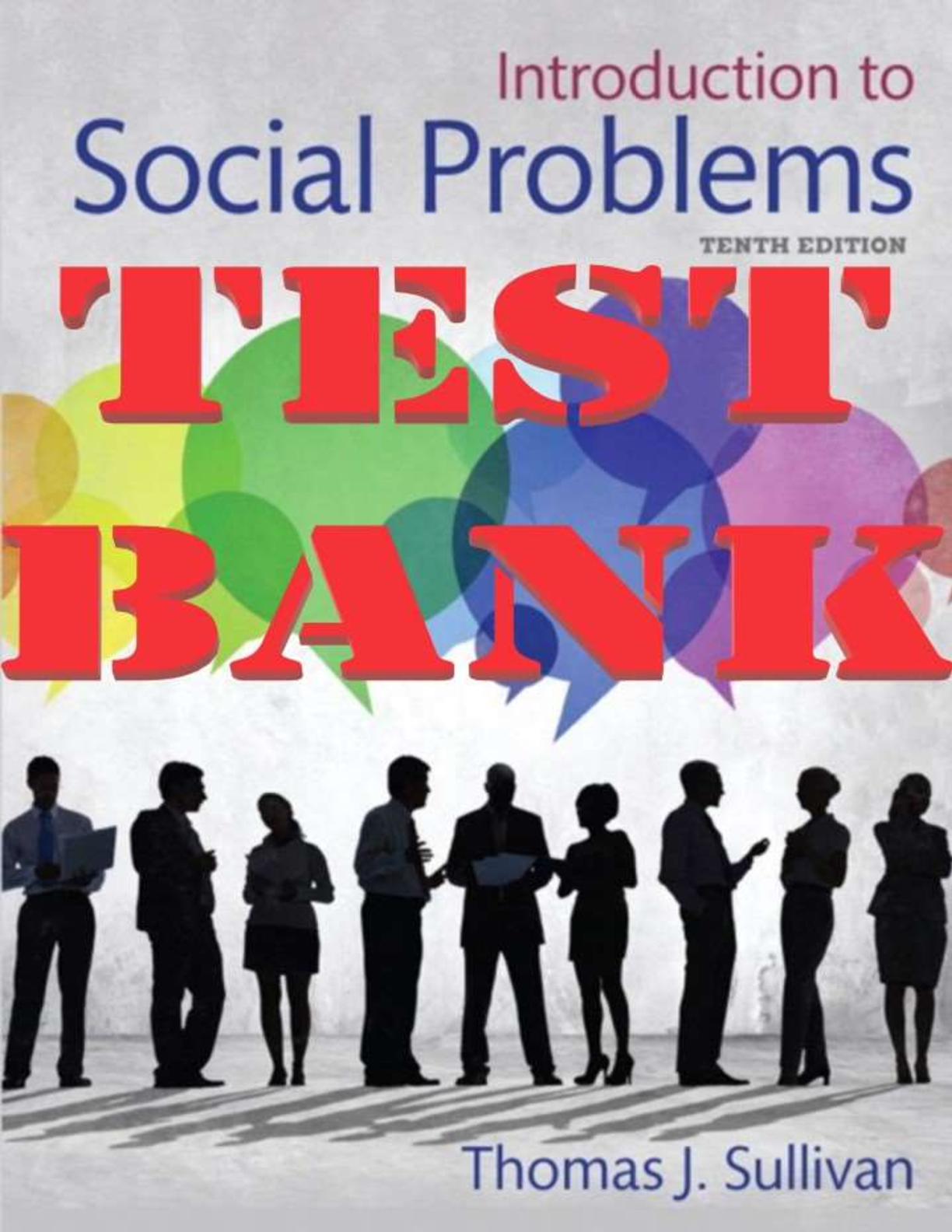*NURSING > TEST BANK > TEST BANK FOR PORTH’S PATHOPHYSIOLOGY 10TH EDITION BY NORRIS CHAPTER 7: Stress and Adaptation (All)
TEST BANK FOR PORTH’S PATHOPHYSIOLOGY 10TH EDITION BY NORRIS CHAPTER 7: Stress and Adaptation
Document Content and Description Below
1. An 81-year-old male patient who has a diagnosis of orthostatic hypotension is experiencing an episode of particularly low blood pressure. The man's body has responded by increasing levels of angiot... ensin II in the bloodstream, a hormone that decreases the glomerular filtration rate in the kidneys and contributes to an increase in blood pressure. Which of the following phenomena best describes what has occurred? A) Positive feedback B) Adaptation C) Negative feedback D) Homeostasis Ans: C Feedback: his regulation and attempt to normalize blood pressure are an example of a negative feedback mechanism, in which physiological processes result in the maintenance of homeostasis. This process of normalization is not an example of positive feedback, and homeostasis is the goal rather than the process. This process involves adaptation, but negative feedback is a more precise characterization of the process. 2. A 61-year-old woman with a 40-pack-a year history of cigarette smoking and a diagnosis of chronic obstructive pulmonary disease (COPD) is experiencing an increase in arterial levels of CO2. This change has been detected in the client's medulla, aortic bodies, and carotid bodies, stimulating the inspiratory center in the medulla oblongata, which has in turn caused the diaphragm to contract more forcefully and increase the respiratory rate. Which of the following terms best describes the role of the inspiratory center? A) Integrator/comparator B) Sensor C) Effector D) Feedback system Ans: A Feedback: An integrator/comparator sums and compares incoming data with a set point. In this case, the inspiratory center has determined the need for increased respiration and stimulated the effector (diaphragm) to respond. The sensor role is in the client's medulla, aortic bodies, and carotid bodies. This overall process is an example of a feedback system, but this does not characterize the particular role of the inspiratory center. 3. Which of the following physiological processes would be considered a positive feedback mechanism? A) The release of antidiuretic hormone (ADH) from the posterior pituitary gland B) Shivering in response to low environmental temperature C) The platelet aggregation mechanism for closing minute ruptures in very small blood vessels during accidental injury D) Increased production of white blood cells (WBCs) in response to a microorganism Ans: C Feedback: The release of hormones during labor increases rather than mitigates a physiological system. Specifically, uterine contraction stimulates the production of other relevant hormones that cause temporary instability that culminates in childbirth. ADH counters the potential instability of insufficient hydration and/or blood pressure, much as shivering is an attempt to counter low temperature. Increased production of WBCs is a response to the potential homeostatic instability of an infectious process. 4. An occupational health officer who works in the context of a large police force is attempting to understand the role that stress may play in the health of his clients. According to Selye, which of the following statements best captures an aspect of the phenomenon of stress? A) The alarm stage involves the release of cortisol and catecholamines. B) The nature of a stress response is determined by the objective severity of the stressor. C) Systemic illnesses can sometimes result from the resistance stage of stress response. D) Periods of stress can be developmentally positive or negative. Ans: D Feedback: Selye noted that stress can result in positive growth and development, and that stress is not unanimously detrimental to health and development. The alarm stage is associated with the release of cortisol and catecholamines, and a stress response is dependent on properties of the stressor and the individual's conditioning; the severity is not objectively determined. Illness is often a consequence of the exhaustion stage. [Show More]
Last updated: 1 year ago
Preview 1 out of 7 pages

Buy this document to get the full access instantly
Instant Download Access after purchase
Add to cartInstant download
We Accept:

Also available in bundle (1)

TEST BANK FOR PORTH’S PATHOPHYSIOLOGY 10TH EDITION BY NORRIS ALL CHAPTERS
THIS PAPER CONSISTS OF ALL CHAPTERS
By GoldenA 3 years ago
$24
44
Reviews( 0 )
$4.50
Document information
Connected school, study & course
About the document
Uploaded On
Mar 01, 2021
Number of pages
7
Written in
Additional information
This document has been written for:
Uploaded
Mar 01, 2021
Downloads
0
Views
68


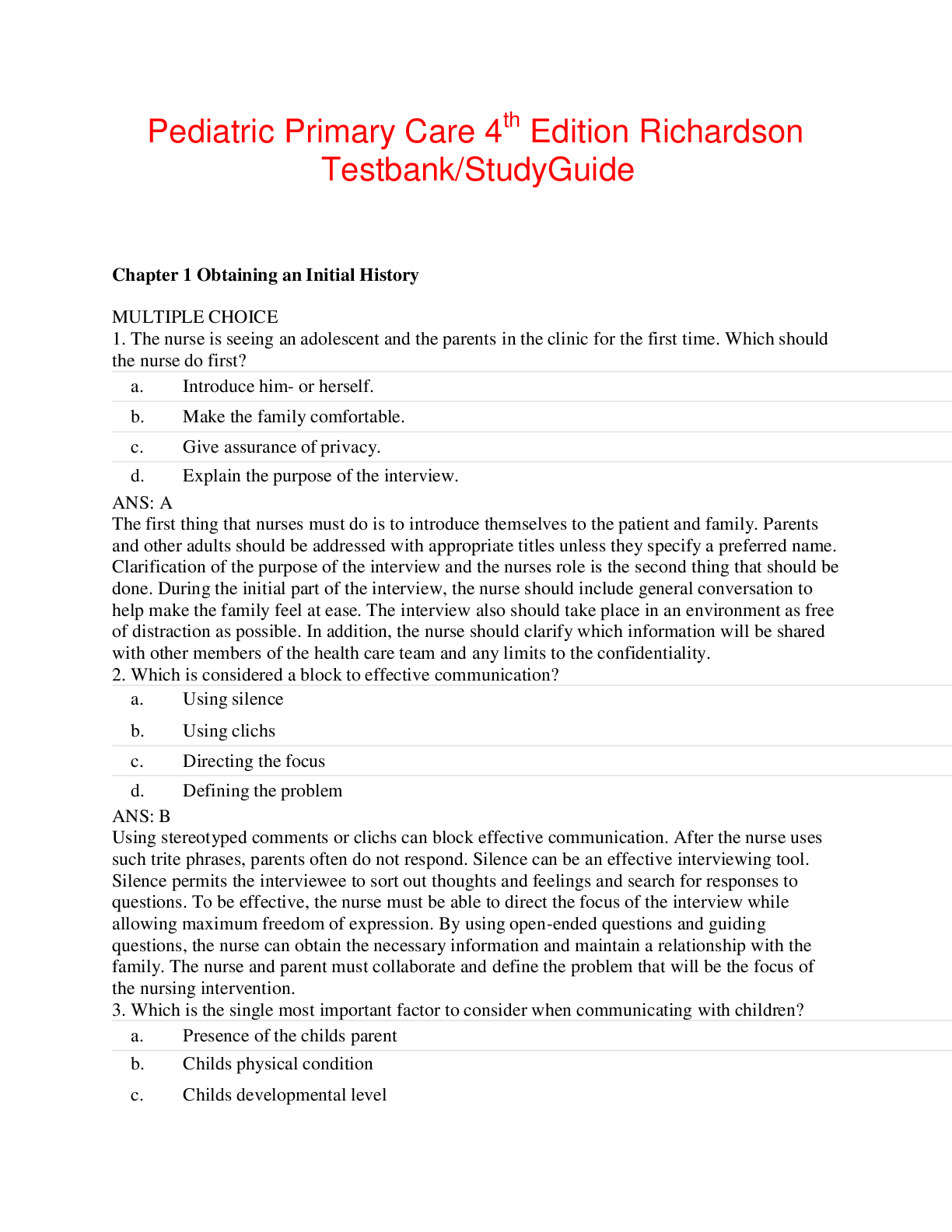

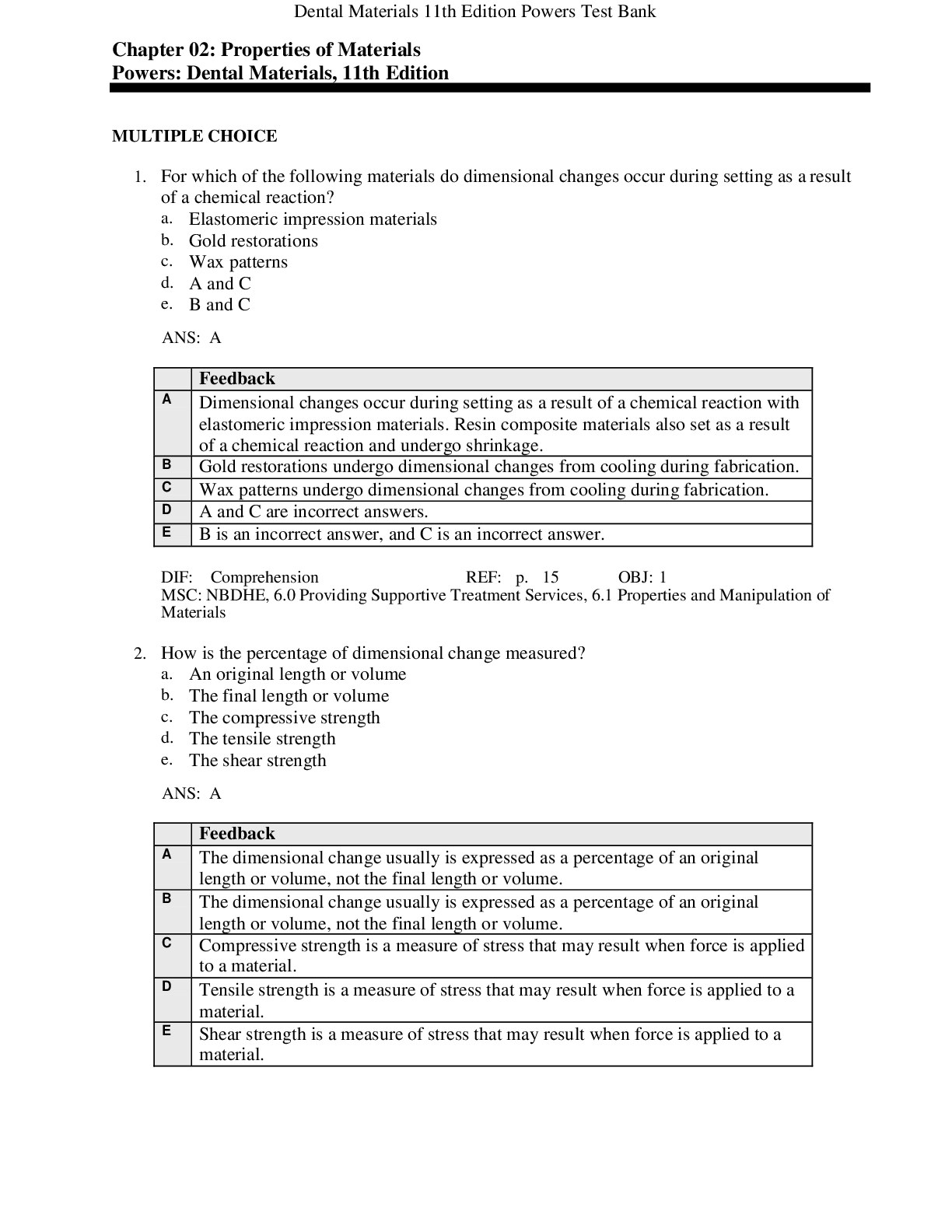
.png)
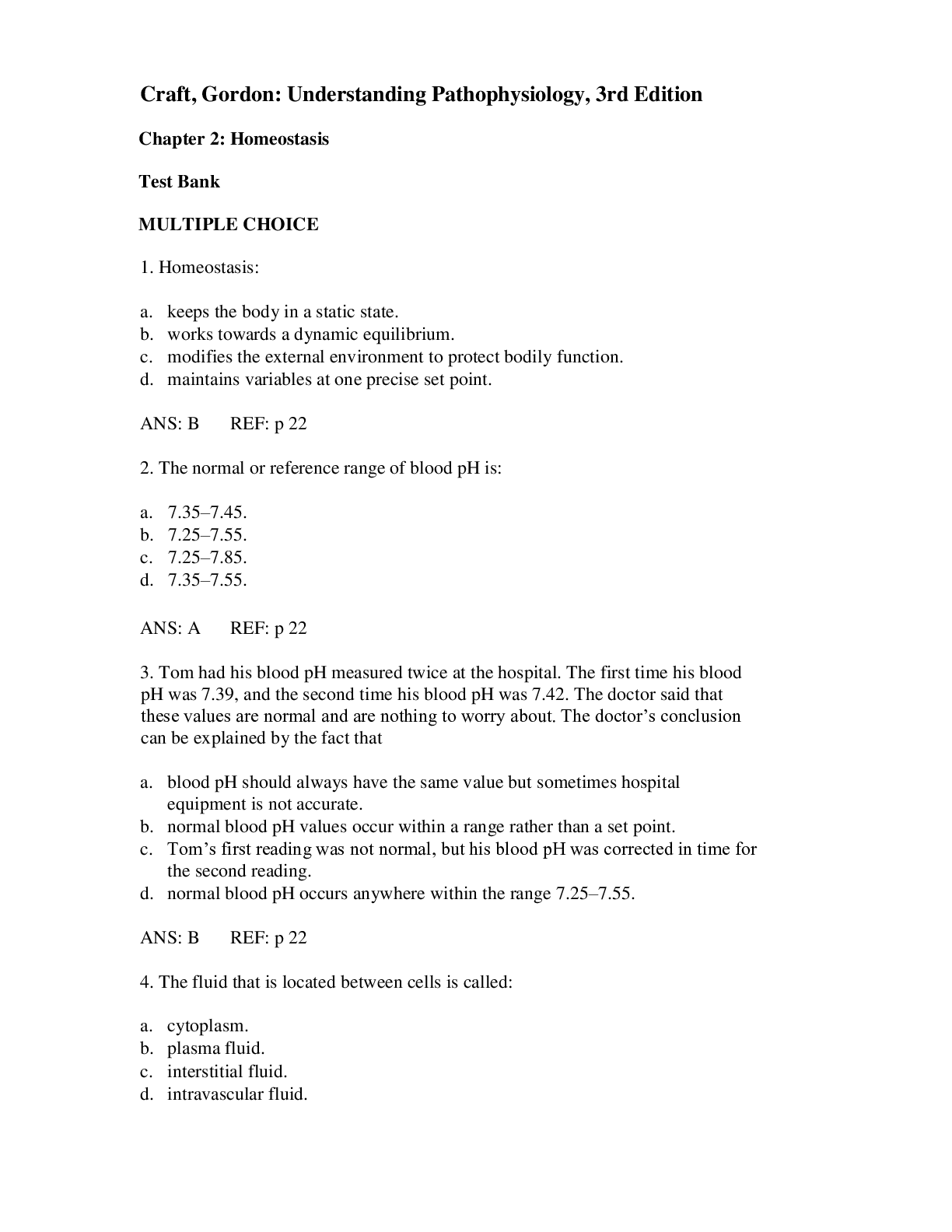



.png)
.png)
